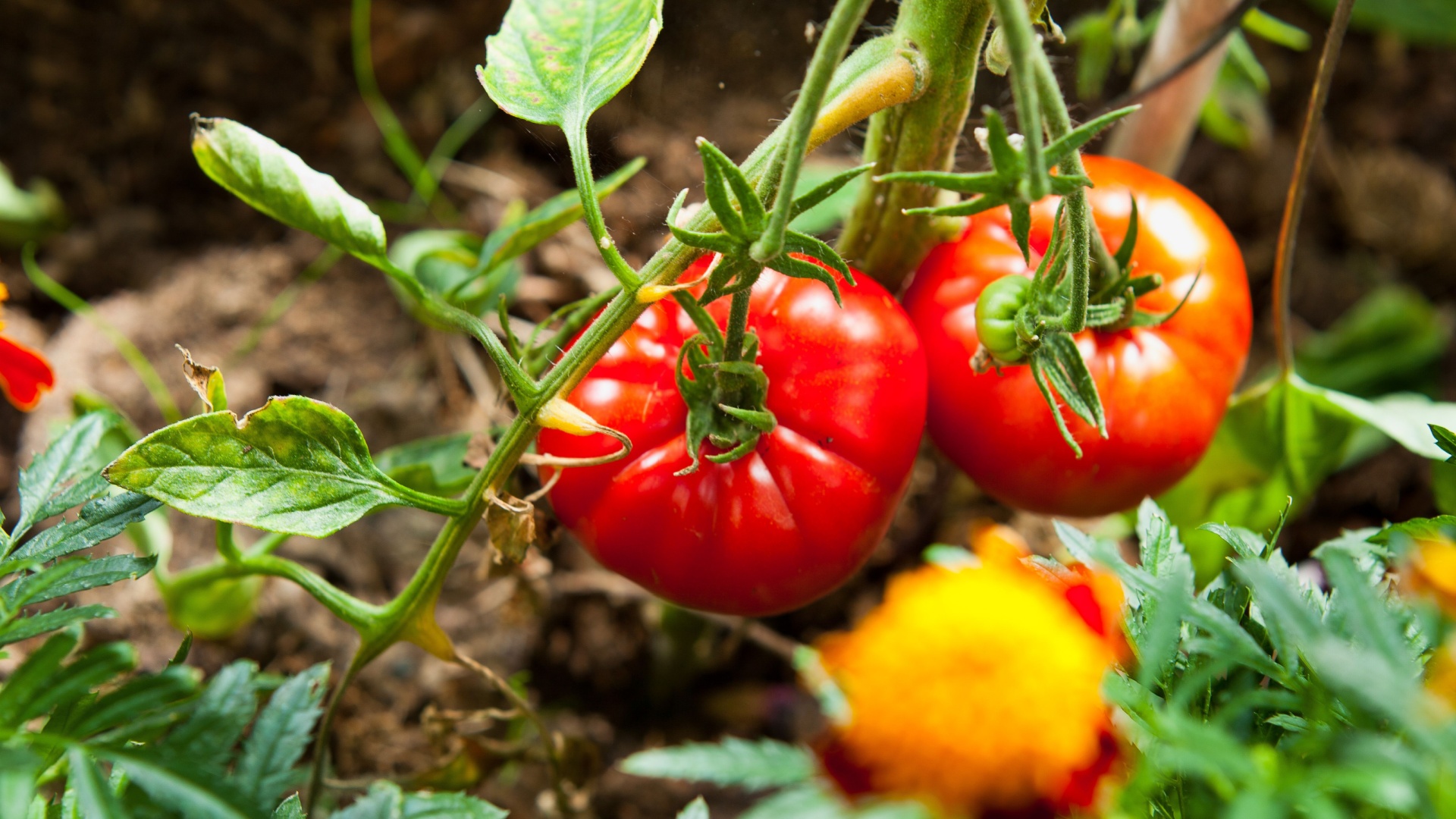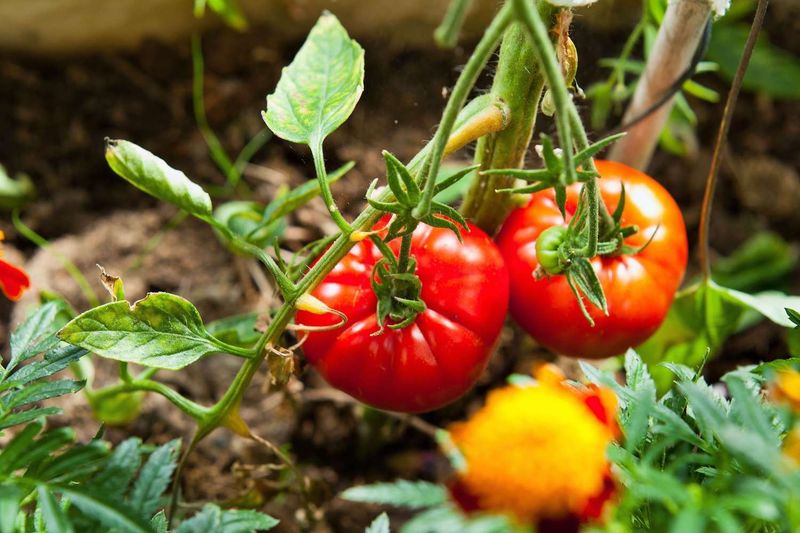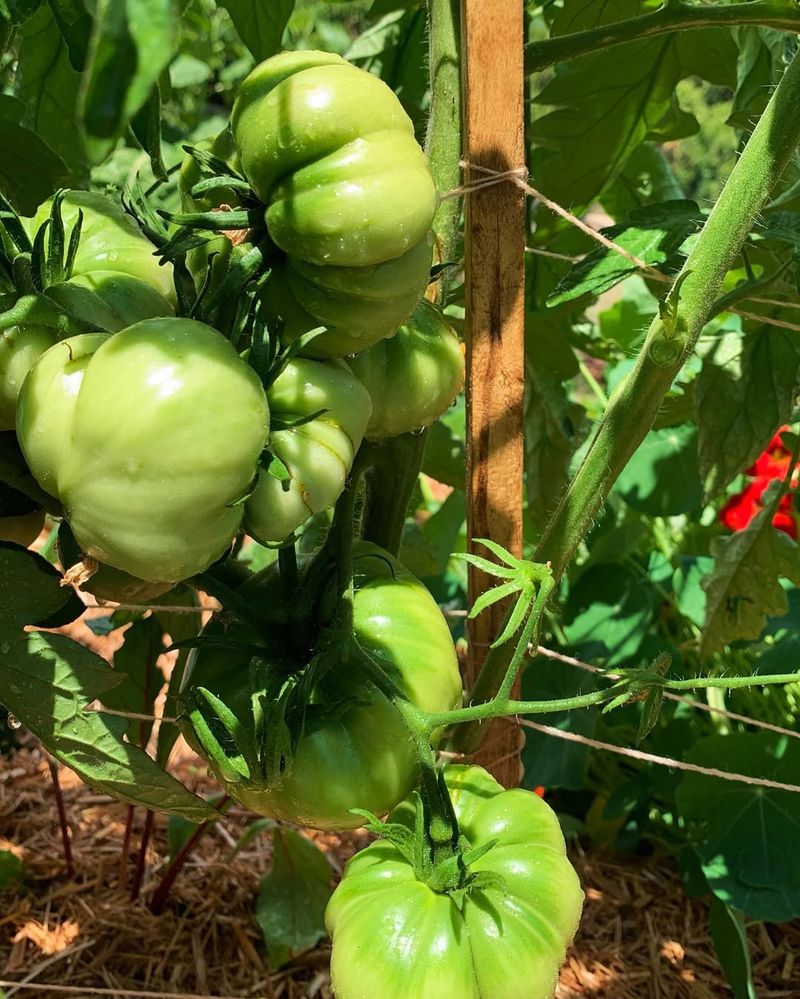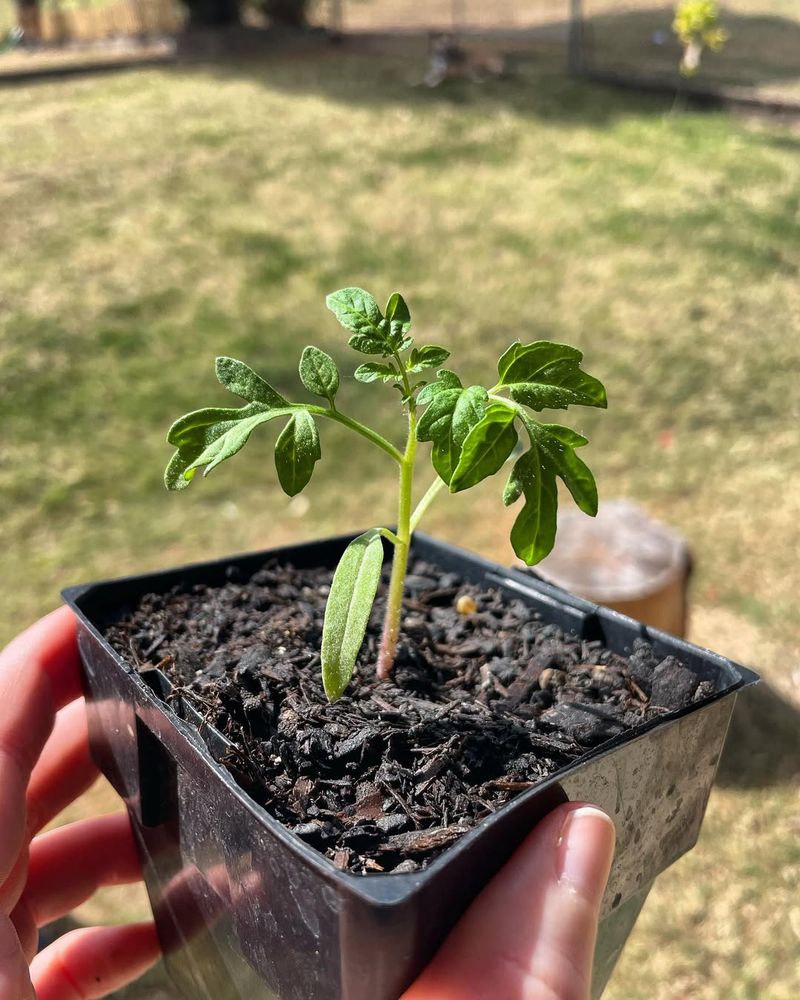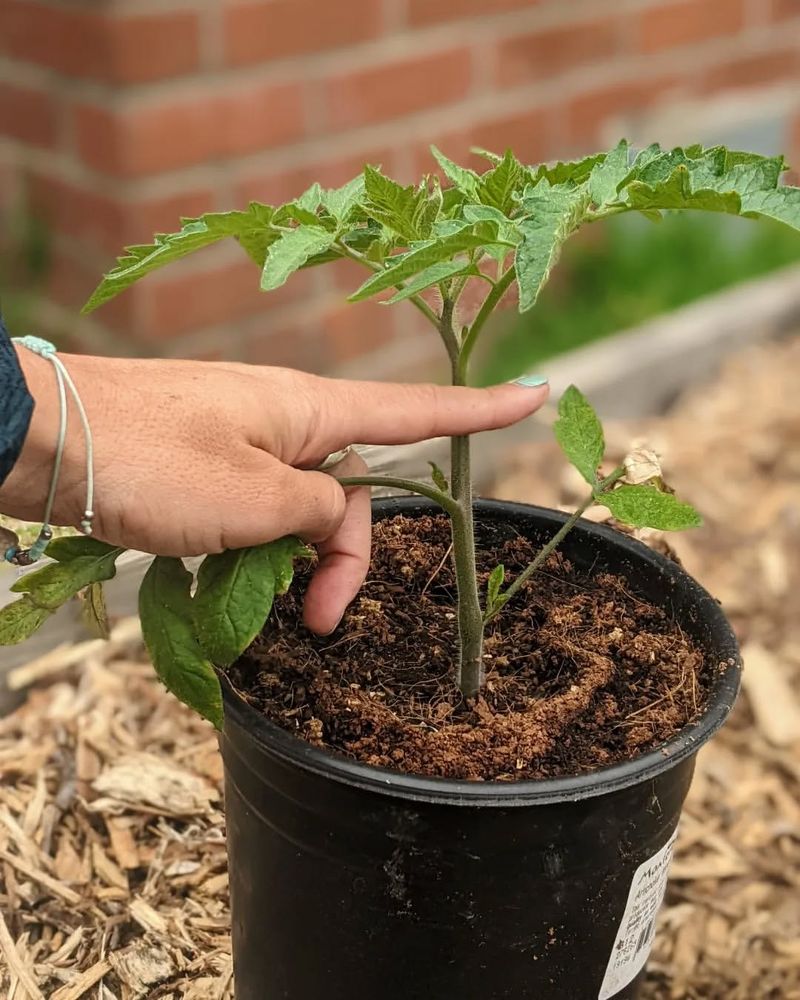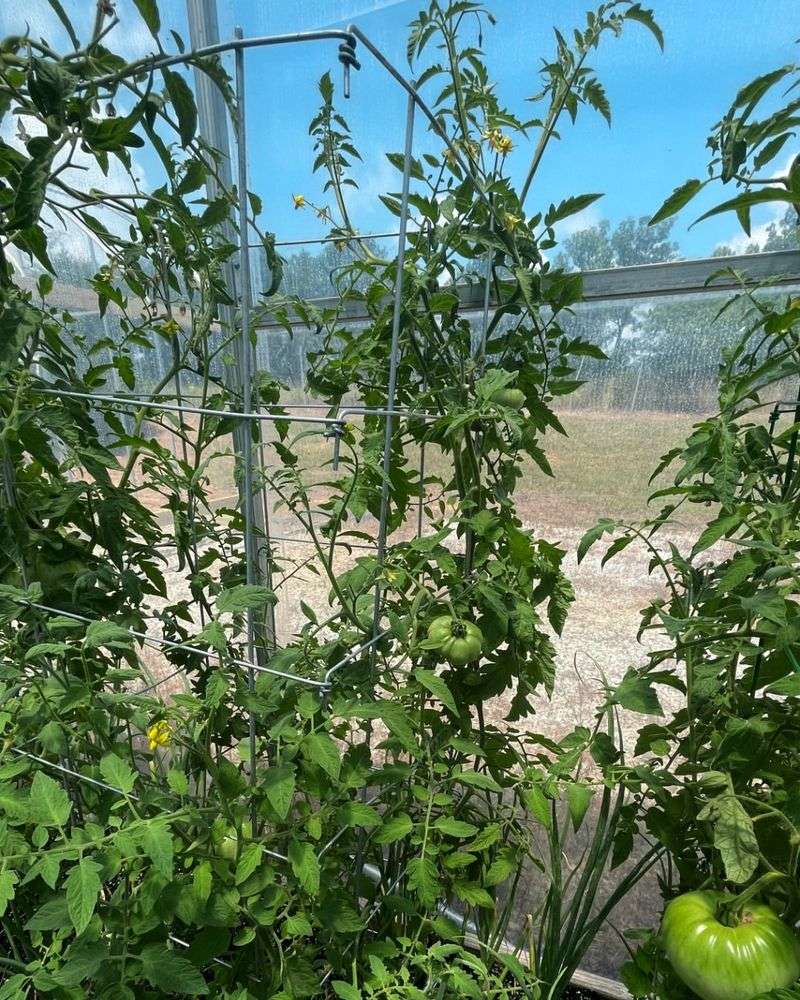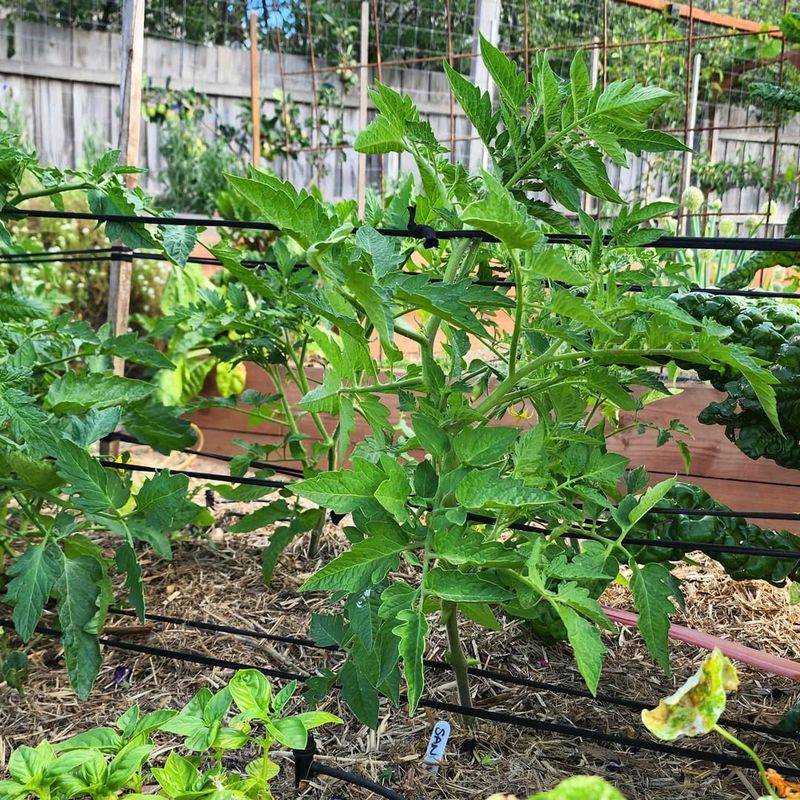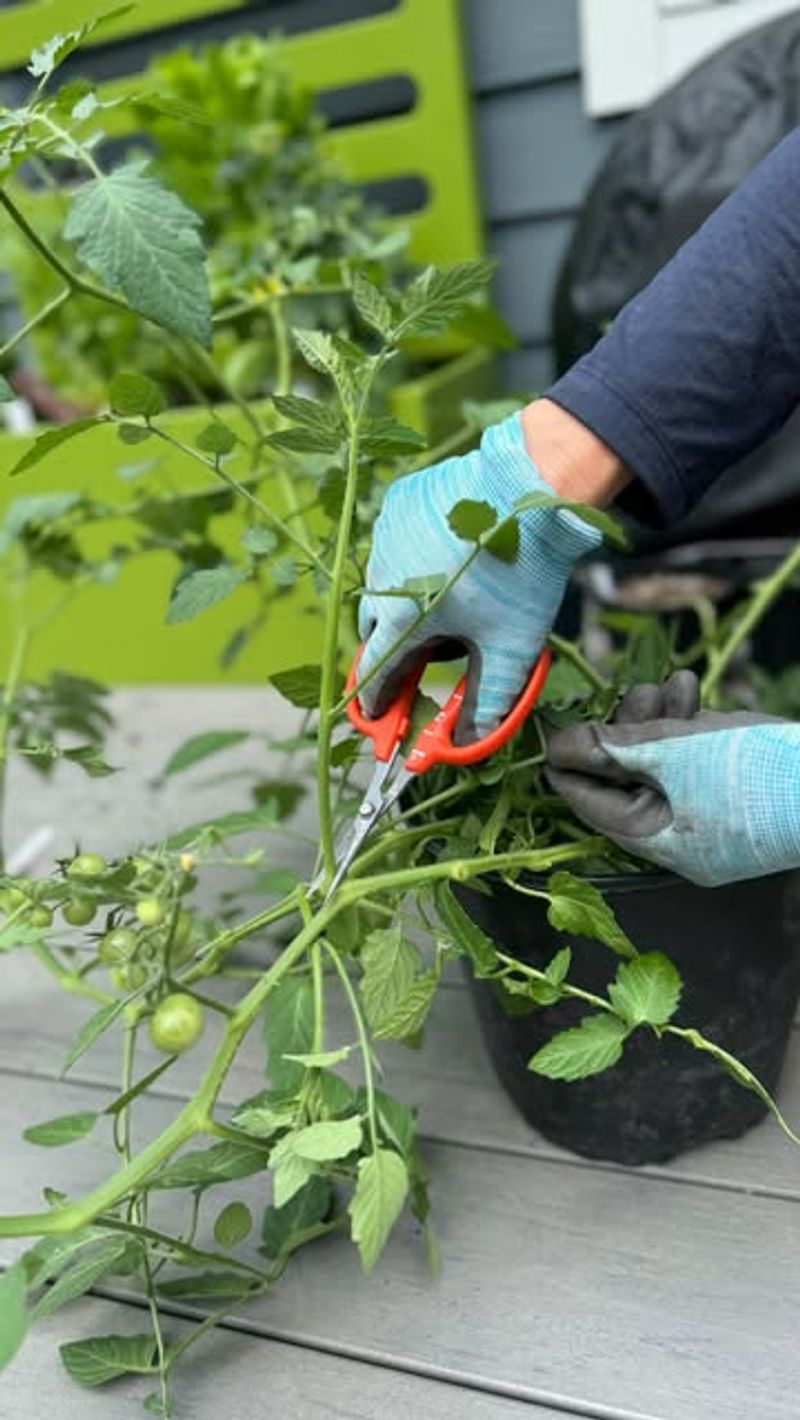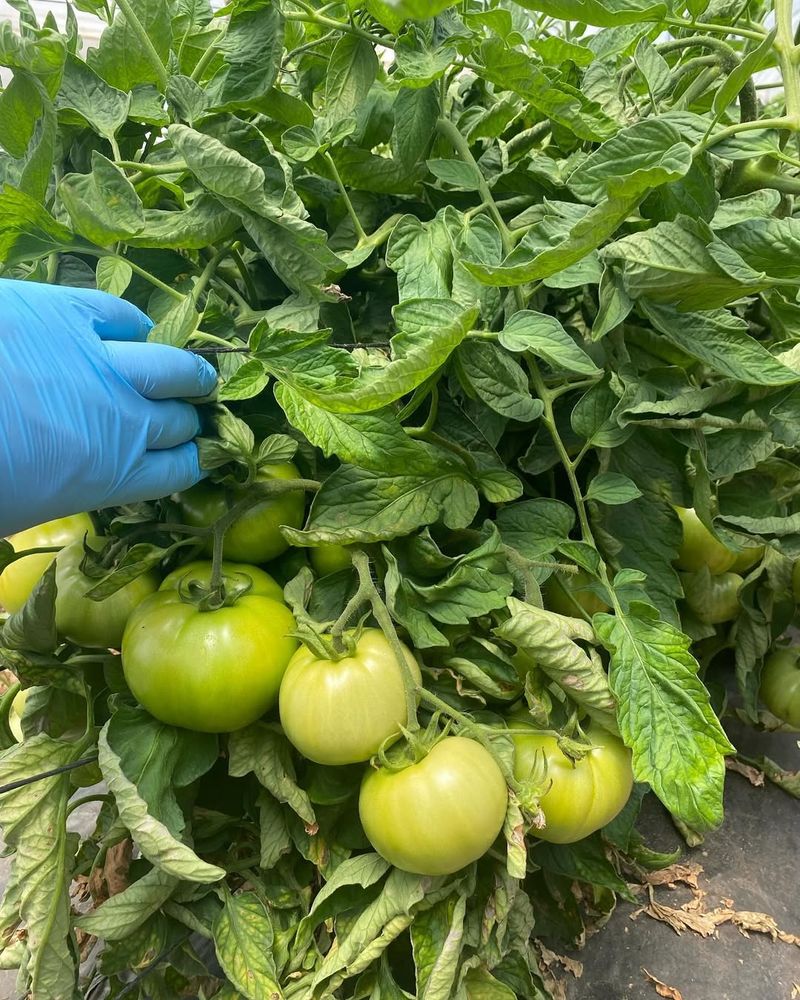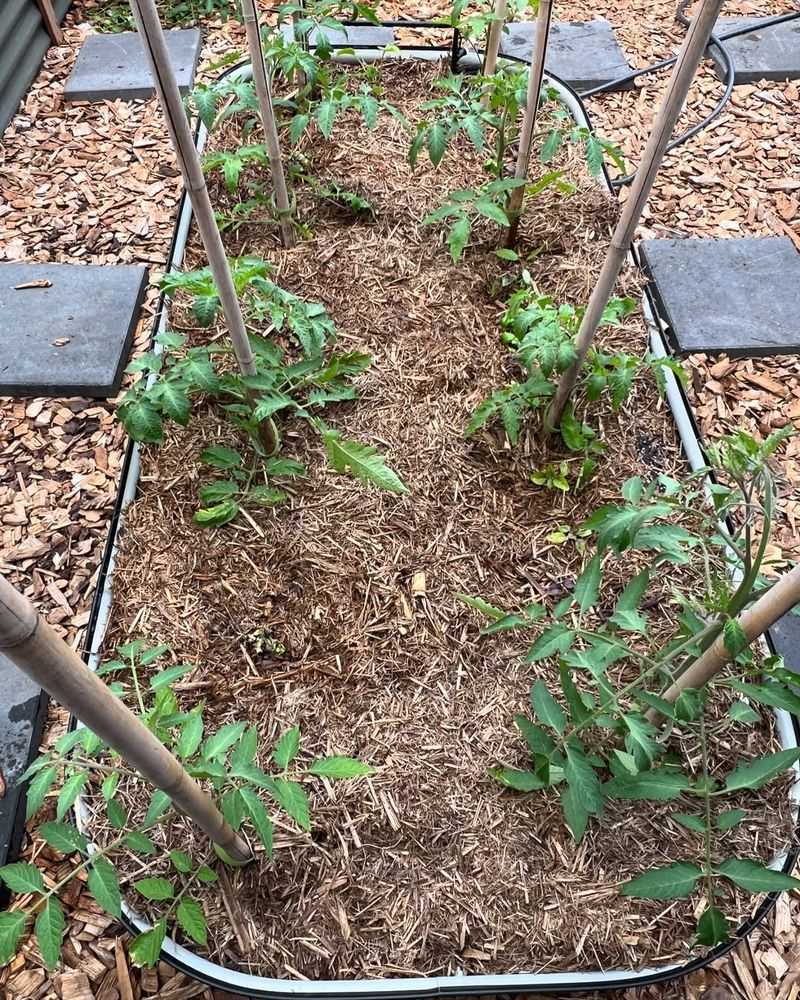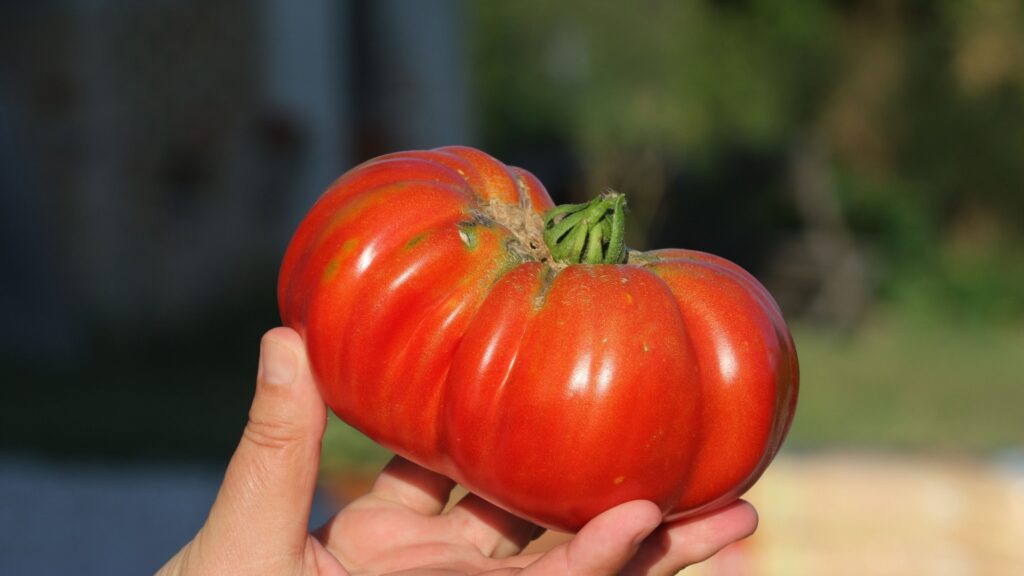Growing beefsteak tomatoes is like striking red gold—nothing beats slicing into a sun-warmed, juicy giant fresh off the vine. With the right know-how, your plants can go from garden greenhorns to tomato titans in no time.
From smart planting to sharp pruning, these tips will turn your patch into a tomato lover’s paradise. Ready to dig in? Let’s grow!
1. Choosing the Right Variety
Selecting the right tomato variety sets the stage for a fruitful harvest. For beefsteak tomatoes, opt for varieties known for high yield and disease resistance like ‘Big Beef’ or ‘Brandywine’.
These varieties not only promise a hefty yield but also stand resilient against common diseases. Why does variety matter? The right choice enhances flavor, size, and growth.
A robust start with disease-resistant varieties saves time and effort later. To ensure success, balance taste with productivity when picking your plants.
2. Give Them Full Sun
Sunshine is the secret sauce for thriving tomatoes, providing the energy they need. Beefsteak tomatoes require at least 6-8 hours of full sun daily to grow optimally.
Consider your garden’s layout and plant them in sun-drenched spots. Adequate sunlight boosts photosynthesis, enhancing growth and fruiting. Position them well to avoid shadows from taller plants.
Remember, more sun equates to more fun in your garden. With proper sunlight, expect juicier tomatoes and more abundant harvests.
3. Start With Healthy Seedlings
Healthy seedlings are the building blocks of a successful tomato crop. Look for seedlings with thick stems and vibrant green leaves. Avoid those with yellowing or spots.
Start seeds indoors 6-8 weeks before the last frost for a robust beginning. This gives a jumpstart on the growing season. Strong seedlings translate to vigorous plants with higher yields.
Check roots; they should be white and not circling the pot. Investing in quality seedlings pays off with healthier plants. A strong start means fewer problems down the line and more delicious tomatoes to enjoy.
4. Plant Deeply
Placing your tomato seedlings deep into the ground may seem counterintuitive, but it’s a golden rule for tomatoes. Bury seedlings up to their first set of leaves. This encourages the development of a strong, extensive root system.
Deep roots anchor the plant and improve nutrient uptake. They also provide better drought resistance. A robust root system supports prolific growth and fruiting.
Don’t be afraid to dig deep for success. Deep planting is a simple yet effective technique to ensure your tomatoes stand tall and deliver bountiful harvests.
5. Space Plants Generously
Crowded plants squabble over resources, leading to poor growth. Space beefsteak tomatoes 18-24 inches apart to ensure each plant thrives. Proper spacing enhances air circulation, reducing disease risk.
It also allows sunlight to reach lower leaves. Avoid the temptation to plant too closely. Generous spacing leads to healthier plants and higher yields.
This simple step pays dividends in fruit quality. Remember, give them room to breathe and grow. Proper spacing is crucial for maximizing your garden’s productivity.
6. Water Consistently
Consistent hydration is key to happy, healthy tomatoes. Aim for deep, even watering at the base of the plant. This encourages strong root growth and prevents blossom end rot.
Water in the morning to reduce evaporation and disease. Avoid getting leaves wet to minimize fungal issues. Consistency is crucial; erratic watering leads to split tomatoes.
Maintain soil moisture without waterlogging. A steady watering regimen keeps tomatoes juicy and productive. Proper hydration is a fundamental component of successful tomato cultivation.
7. Support With Staking Or Caging
Tomatoes can be a heavy burden for their stems, especially when laden with fruit. Provide support with stakes or cages early in the growing season.
This keeps plants upright and fruits off the ground, reducing spoilage. Staking also maximizes sun exposure and airflow. Choose sturdy materials like bamboo or metal.
Proper support ensures plants can focus on producing fruit rather than struggling to stay up. Don’t wait until they’re drooping to act. Supporting your tomatoes is a proactive way to ensure a fruitful harvest.
8. Prune Strategically
Trimming is a balancing act, but it’s worth the effort for indeterminate tomatoes. Remove suckers, the small shoots growing in leaf axils, to direct energy to fruit production.
Pruning improves airflow and sunlight penetration. It reduces disease and focuses growth on fruit-bearing branches. However, avoid over-pruning, which can stress the plant.
Strategic pruning increases yield and improves fruit quality. Regular maintenance keeps plants healthy and productive. Embrace the art of pruning for a bountiful tomato harvest.
9. Feed Regularly
Fertilizing tomatoes is like fueling a race car; it’s essential for peak performance. Use a balanced fertilizer with equal parts nitrogen, phosphorus, and potassium.
Fertilize every 4-6 weeks during the growing season. Avoid excess nitrogen, which promotes leaf growth over fruit. Follow the manufacturer’s instructions for dosage.
Regular feeding ensures steady growth and abundant fruiting. Healthy nutrition results in robust plants and flavorful tomatoes. Keep your tomatoes well-fed for the tastiest harvest.
10. Watch For Pests & Disease
Pests and diseases are the nemeses of gardeners. Common culprits include aphids, blight, and hornworms. Regular checks help catch problems early.
Use organic methods like neem oil or insecticidal soap for pest control. Rotate crops annually to prevent disease buildup. Vigilance and prevention are your best allies.
Keep plants healthy and resilient. A proactive approach minimizes damage and ensures a healthy harvest. Stay alert and defend your garden against unwelcome visitors.
11. Bonus Tip: Mulch & Rotate Crops
Mulching and crop rotation are unsung heroes in gardening. Mulch retains soil moisture, suppresses weeds, and regulates temperature. Use organic mulch like straw or wood chips.
Crop rotation prevents soil nutrient depletion and reduces disease risk. It breaks pest cycles and contributes to soil health.
These practices enhance growth and productivity. Mulch and rotate for a thriving garden year after year. They are simple yet powerful tools in a gardener’s arsenal.
12. Harvest At The Right Time
Timing is everything when it comes to picking beefsteak tomatoes. Harvest them when they’re fully colored and slightly soft to the touch. Ripe tomatoes will come off the vine with a gentle twist.
Avoid letting them overripen on the plant, which can attract pests and reduce flavor. Picking at the peak of ripeness ensures the best taste and texture. Check plants daily during peak season.
Frequent harvesting also encourages more fruit production. A little attentiveness goes a long way—harvest right, and enjoy the fruits of your labor at their absolute best.

